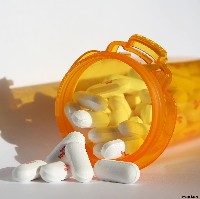A study in the January 2011 issue of the Journal of Advanced Nursing (paid subscription required) suggests that the practice of cutting prescription tablets in half results in wide dosage variations, which can be dangerous for patients needing accurate doses of their medicines. The research was done by the Faculty of Pharmaceutical Sciences at Ghent University, Belgium.
Splitting tablets is done for or by some patients to save money and extend the supply of drugs, or in some cases to make tablets easier to swallow. In the study, five volunteers split eight tablets of various sizes, using techniques used in nursing homes: a device made for tablet splitting, scissors on unscored tablets or manual splitting of scored tablets, and a kitchen knife.
The research team weighed the split tablets and calculated the difference between the split pieces and the expected weight of exactly half the original tablet. They found nearly one-third (31%) of the split pieces deviated from the expected weights by more than 15 percent. One in seven of the split pieces (14%) deviated from the expected weight by more than 25 percent.
Some of the tablets were easier to split in half than others, and the pieces from those easier tablets had lower error rates. But even the device made specifically to split tablets returned 13 percent of its pieces with weight variations of 15 percent or more.
The authors called on manufacturers to produce more dosage options and liquid alternatives to make the practice of tablet splitting unnecessary. Where professionals cannot avoid the practice, as in some nursing homes, the authors recommend using only devices designed for that purpose, as well as better training.
* * *


 RSS - Posts
RSS - Posts
You must be logged in to post a comment.